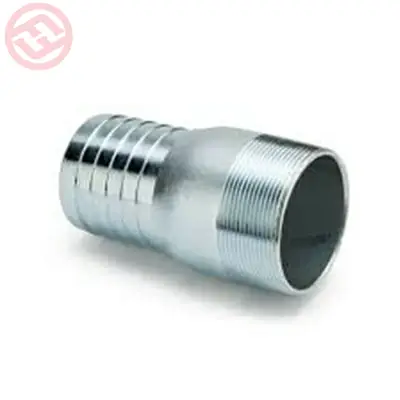Inspecting steel pipe nipples for signs of mechanical damage is an essential part of ensuring the integrity and safety of piping systems. Here’s how you can inspect steel pipe nipples for mechanical damage:
- Visual Inspection: Conduct a thorough visual inspection of the entire length of the steel pipe nipple. Look for any visible signs of mechanical damage such as dents, scratches, gouges, cracks, or deformities. Pay particular attention to areas near threaded ends, bends, or transitions where mechanical damage is more likely to occur.
- Dimensional Checks: Use measuring tools such as calipers or micrometers to check the dimensions of the steel pipe nipple, including diameter, length, and wall thickness. Compare the measured dimensions to the manufacturer’s specifications to identify any deviations that may indicate mechanical damage or excessive wear.
- Thread Inspection: Examine the threads of the steel pipe nipple for signs of wear, stripping, or deformation. Check for any visible damage to the thread profile, such as flattening, galling, or cross-threading, which can affect the integrity of threaded connections and compromise sealing effectiveness.
- Surface Condition: Inspect the surface condition of the steel pipe nipple for indications of mechanical damage, steel pipe nipple including surface roughness, scoring, or pitting. Look for any irregularities or anomalies that may indicate impact or abrasion damage caused by external forces.
- Magnetic Particle Inspection (MPI): For critical applications or high-stress environments, consider performing non-destructive testing methods such as MPI to detect subsurface defects or cracks in the steel pipe nipple. MPI involves magnetizing the nipple and applying a magnetic particle solution to reveal any indications of discontinuities or flaws.
- Ultrasonic Testing (UT): Ultrasonic testing can be used to detect internal defects or discontinuities in the steel pipe nipple, such as cracks, voids, or inclusions. UT involves sending ultrasonic waves through the material and analyzing the reflected signals to identify potential defects.
- Pressure Testing: Conduct pressure testing on the steel pipe nipple to assess its integrity and resistance to internal pressure. Apply a hydraulic or pneumatic pressure to the nipple and monitor for any signs of leakage, deformation, or failure under the applied load.
- Documentation: Document the results of the inspection, including any findings of mechanical damage, measurements, and testing results. Maintain accurate records of inspection activities for future reference and traceability purposes.
By following these inspection procedures and techniques, you can effectively assess steel pipe nipples for signs of mechanical damage and ensure the reliability and safety of piping systems. Regular inspection and maintenance of pipe nipples are essential for identifying potential issues early and preventing costly failures or accidents.
